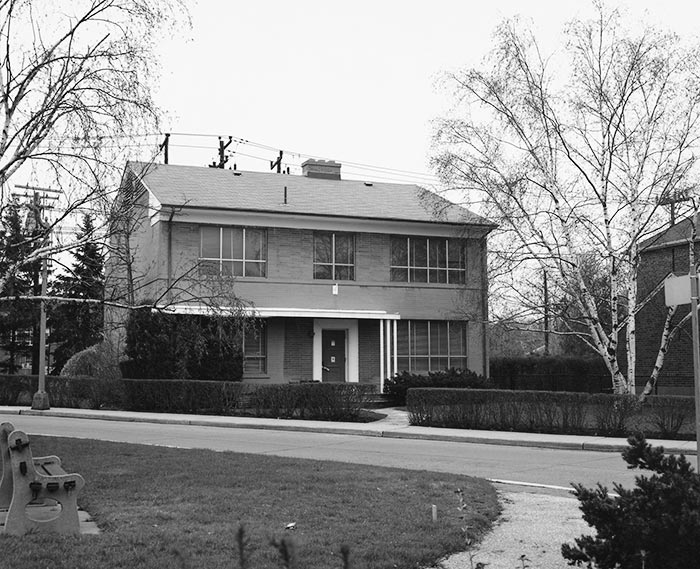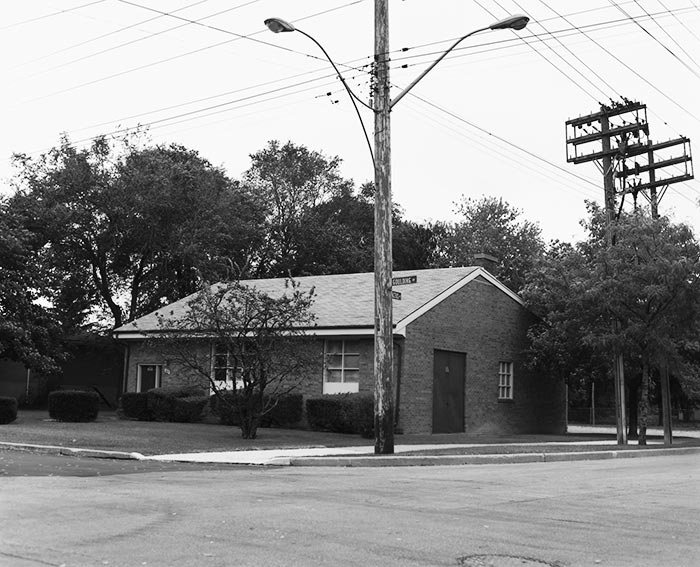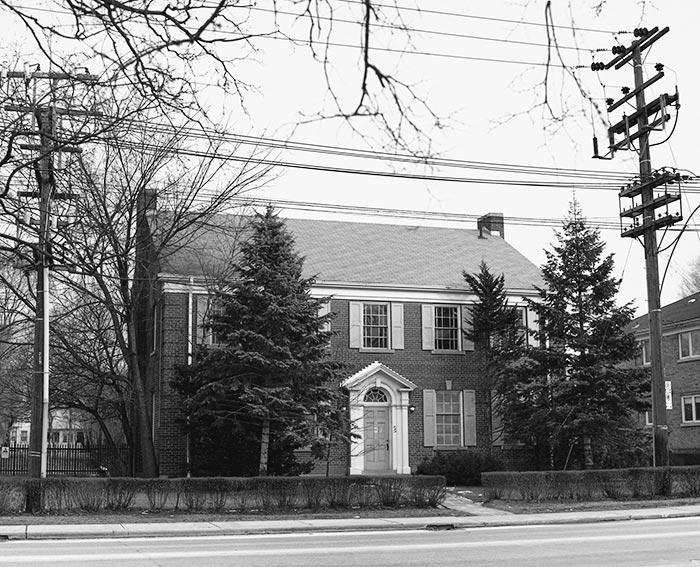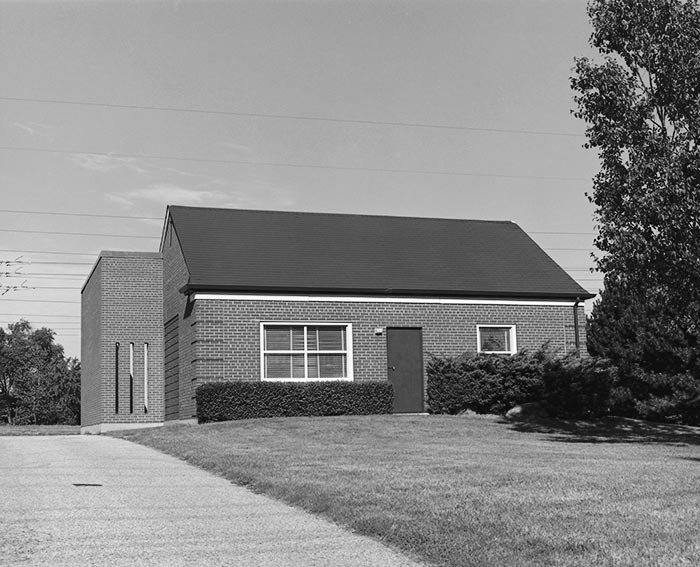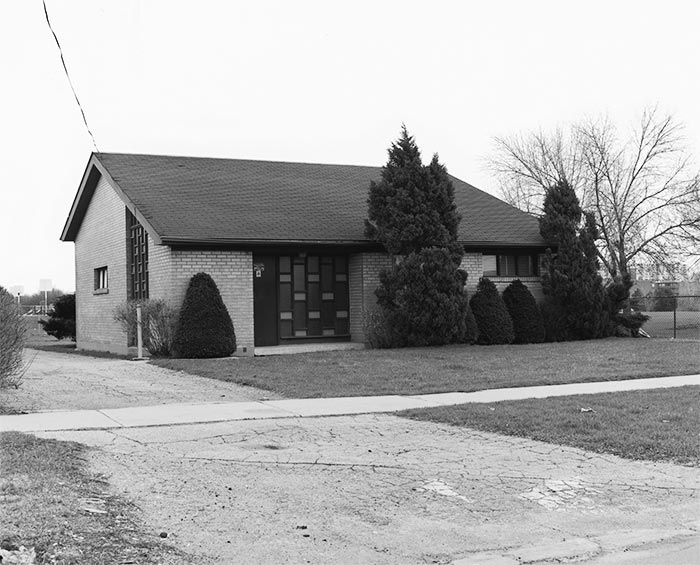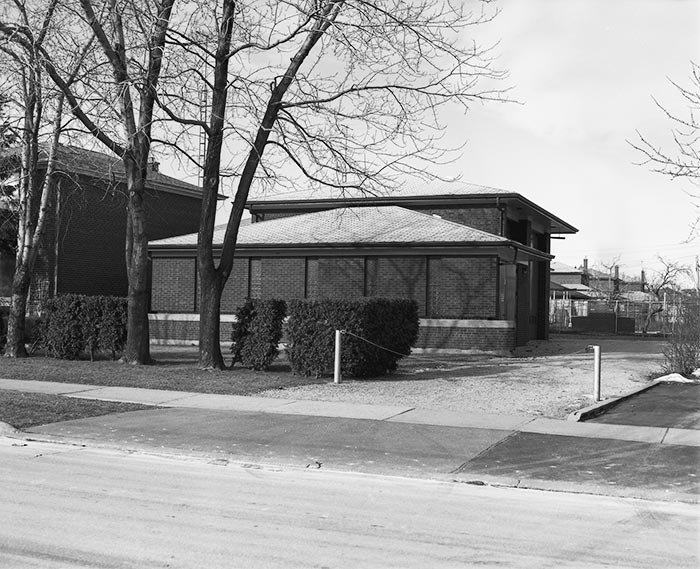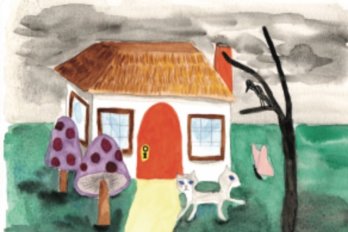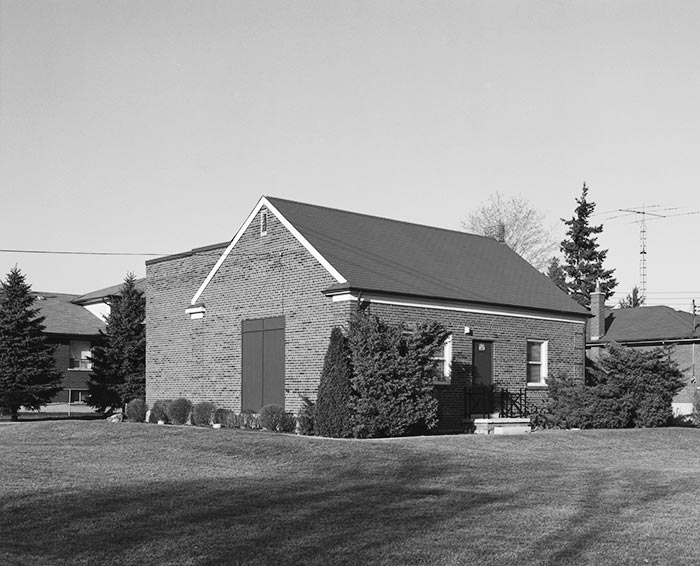
During the 1950s and 1960s, “transformer houses” were built in quiet suburban neighbourhoods across Canada. Necessary illusions, these normal-looking houses were, in fact, electrical substations owned by hydro companies and used to convert high-voltage juice into the regular 220- and 240-volt currents sucked up by the homes around them. Instead of plunking a heavy piece of machinery in the middle of a residential community, hydro companies wrapped A-frames around the transformers and planted low-maintenance shrubs in the garden, essentially creating single-family homes where no family would ever live. Artist Robin Collyer decided to document these ghost houses before they vanished. Says Collyer: “ I read that they were being sold off, so I contacted Hydro and got lists of locations. Some were easier to find than others. They tend to be in places where there are lots of hydro lines. I grew up in North York, Ontario, so I knew about them as a teenager. They were curiosities and the butt of jokes—you know, about the family who might be living there—because the lights do come on at night, and there are usually venetian blinds on the windows. That was one of the things that attracted me to them: the idea that a large corporate entity would be sensitive enough to consider the character of the community. I also liked that they are not just a facade, but a complete structure. These houses are adventurous and mysterious. They’re fictional, in a way.”
